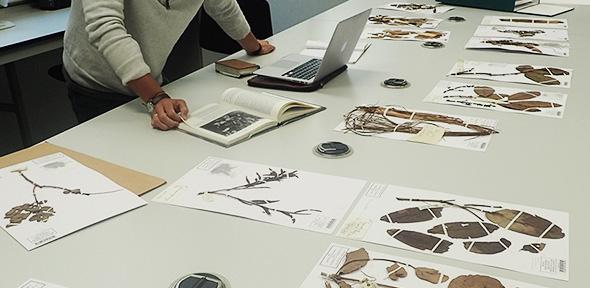
Facilitating research is a core function of the Herbarium.
Each of the 1.1 million specimens in our collection is a multi-dimensional datapoint: it is a record that a plant was present at a specific location, on a specific date, with a specific profile of morphologies, life-cycle stages, pest damage and more. Many have additional historical and/or social information attached to them e.g how the plant was used by the local indigenous people or whether it was collected by a prominent individual or on a famous expedition.
The rich, diverse information held within our specimens has enormous research potential, in fields as varied as the natural sciences, geography, history and anthropology. We collaborate with Departments across the University of Cambridge, external academic researchers and organisations, including the Botanical Society of Britain and Ireland, the Wildlife Trust and Natural England.
Explore these pages to learn more about past projects and to find out how you can use our collections in your own research.

